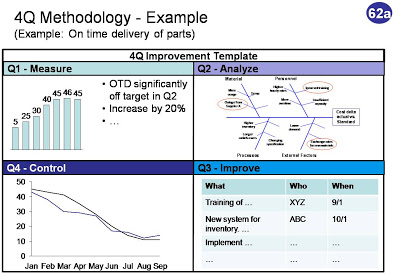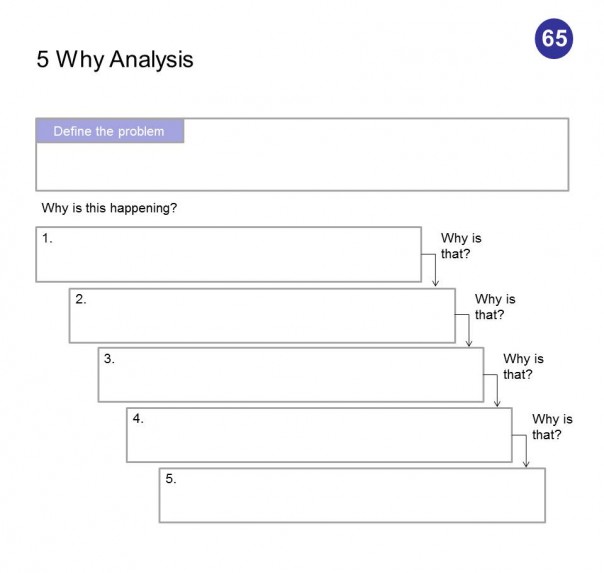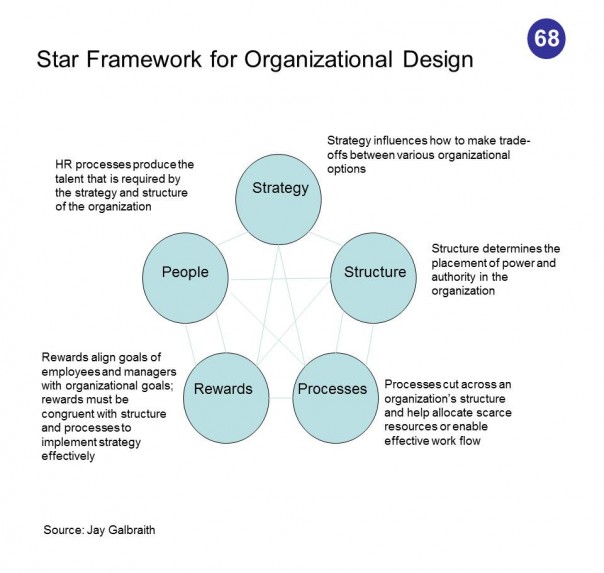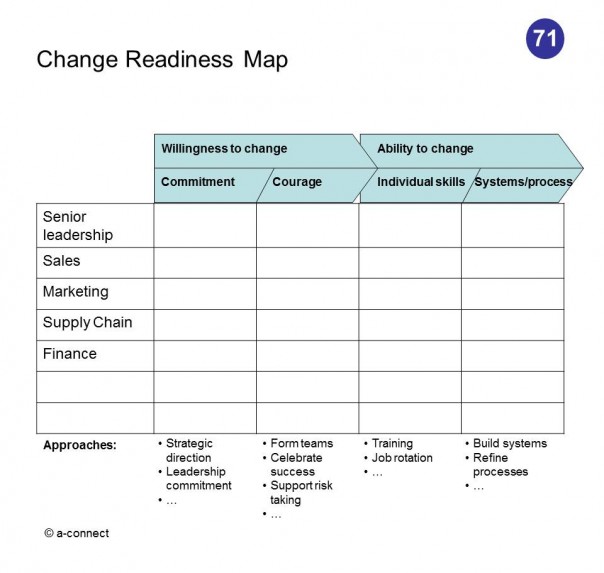D. Kudryavtsev, L. Grigoriev, V. Kislova, A. Zablotsky
Abstract: Enterprises in growing markets with transitional economy nowadays encounter extreme necessity to change their structures and improve business processes. In order to support knowledge processes within organizational change initiative enterprises can use business modeling tools. On one hand software vendors suggest many tools of this kind, but on the other hand growing markets with transitional economy determine quite special requirements for such tools. This article reveals these requirements, assess existing business modeling tools using these requirements and describes ORG-Master as a tool specially created for support of process improvement initiatives in the growing markets with transitional economy.
Keywords: Business information modeling, business modeling, knowledge process, organizational change, business process improvement, growing markets, transitional economy.
Introduction
ORG-Master is a business modeling software, which was initially created as a response to growing need for computer aid to consulting projects in the field of organizational change and business transformation. In spite of the diversity of products for business modeling ORG-Master has certain advantages that can be revealed in solving certain tasks in certain environment.
Certain tasks include such organizational change components as business process improvement, business restructuring, quality management implementation and holistic improvement of management system. In the current article organizational development will be described by the example of business process improvement (BPI) initiative.
Certain environment include growing markets with transitional economy (GMwTE) which determine specialties in organizational change initiatives. GMwTE include post-soviet countries (Russia, Ukraine, Belarus, Kazakhstan) and in the current article will be described by the example of Russia. In order to reveal these specialties Section 1 describes features of GMwTE from management point of view. Section 2 focuses on the flow of knowledge within BPI initiative and gives an ability to define requirements for business modeling tool at the GMwTE (section 3). Section 4 reveal imperfections of existing business modeling tools with respect to above-mentioned requirements and show the niche for ORG-Master. Section 5 explain the main concepts and consequent advantages of ORG-Master. Section 6 describes practical application of ORG-Master.
1. Business process improvement initiatives in the growing markets with transitional economy
The most important features of GMwTE from management point of view are:
1. Extremely high pace of change in market conditions and business environment
2. Low level of managerial culture
3. Predominance of informal methods of management
Quick changes and competition growth make companies to change in the same pace and the main objectives in the organizational change is to fit company structure with business needs and to implement client-oriented business processes that allow to achieve company goals. This results in the necessity to launch restructuring or BPI initiatives.
The main prerequisite for BPI initiative is transparent management at every level of organization. In this context transparency implies holistic knowledge describing What functions and processes are realized in the company, Who performs the functions, How the functions are performed, What for are the functions performed. While low level of managerial culture results in absence of clear knowledge in this field. As a results BPI initiative in the GMwTE usually involve a wide range of preliminary stages directed towards understanding of company “big picture” in order to make conceptual changes and define the processes for improvement or re-engineering.
The third feature of GMwTE — predominance of informal methods of management results in small amount of documents and business rules. Such a situation has its roots either in skeptical attitude to archaic and out-of-date formal documents at post-soviet enterprises or in quick growth of small start-ups. In some situations informal intuitive method of management brings fruits, but it is terminated by the scale of business and is one of the barriers in development of managerial culture. As a result BPI initiative in the GMwTE has an important objective – to switch company from informal methods of management to formal procedures and business rules.
2. Knowledge process in the business process improvement initiative
BPI or restructuring initiatives deal with business organization knowledge. Under business organization knowledge in the current article we will understand knowledge domain covering organizational goals, structure, processes, functions, rules, rights, authorities and relationships between this objects. Thus in order to raise effectiveness of BPI initiative project team should support knowledge process in the domain of business organization knowledge. As described in [Strohmaier, 03a] knowledge infrastructure is determined by the nature of knowledge process, which in turn can be understood through analysis of business processes covered by improvement initiative (figure 1).
Figure 1: Business process and knowledge infrastructure relationship
The main constituents of improvement initiatives are organizational change processes - a subset of the whole system of business processes:
business process analysis
business process improvement
organizational structure control
performance management
Business analysts (either internal, or external consultants) together with domain experts (head of departments and other managers) generate business organization knowledge, store and transfer it throughout the organization in these processes.
Application of business organization knowledge is distributed between all the other business processes — operating, management and support processes. Organizational roles of performers vary from workers to executives (top managers).
According to [Strohmaier, 03b] business organization knowledge can be visualized (figure 2).
Figure 2: Knowledge process in the business improvement initiative
The most important and influential feature of this process consists in different organizational roles involved in it and especially in the knowledge transfer process. During transfer process business analysts deliver their knowledge through the mediation of domain experts to personnel from different domains and organizational levels. As it was mentioned in [Section 1], one of the goals of BPI initiative in the GMwTE is to shift the priorities of management from informal methods to formal business rules. Thus the basis of knowledge transfer is formalized knowledge and the main factor of its successful internalization [see Nonaka, 03] by personnel is type of knowledge representation.
Type of knowledge representation depends on two specific knowledge processes generation on one hand and application on the other. While the way these processes are performed is determined by the involved organizational roles.
Business analysts have developed competencies in organizational management and system analysis. They have detailed understanding of business from different points of view and can operate with different objects and their relations (organizational units, functions, processes, goals etc).
Personnel from different domains and organizational levels have low competencies in organizational management see [Section 1]. They usually have only dim understanding of business from “organizational unit” point of view (answer for the question “who do what?”).
As a result business analysts primary use diagrams of different types and notations (IDEF0, UML, EPC) as a mean of knowledge representation. The other personnel use job descriptions, documents describing the functions of business units / departments and other regulating documents. In addition these regulating document for application usually prepared according to national, industrial or corporate standard. Namely these regulating documents solve one of the objectives of BPI initiative in the GMwTE - shift the priorities of management from informal methods to formal business rules see [Section 1].
Thus the necessity to facilitate communication between people speaking “different languages” predetermines important requirement for knowledge infrastructure.
3. Requirements to business modeling tool for GMwTE
For the current analysis we assume business modeling tool primary as a support system for knowledge generation and storage during BPI initiative.
Previous section described the necessity to have different types of knowledge representation during BPI initiative in the GMwTE. Assumption that the process of knowledge transfer do not change the type of knowledge representation imply the necessity to generate knowledge both in type of diagrams for analysis and regulating documents for application. This requirement for knowledge generation process determine the first requirement for business modeling tool:
1. Ability to represent knowledge in different types and formats.
Section 1 highlight the necessity of preliminary stages within BPI initiative in the GMwTE. For example, companies should define goals, composition of functions, change organizational structure, reassign responsibilities for function realization, reveal a list of business processes. This tasks can be done both in series and in parallel and include several analysts concentrating either on different tasks or on different levels of detail. Such a nature of BPI initiative determine the next requirement:
2. Ability to work both with a complex model (e.g. business process model) and with separate parts of this model (relate functions with organization roles, roles with infrastructure etc) using different views of enterprise.
Fast dynamic of the enterprise development is especially relevant for GMwTE and require constant improvements in business processes thus a model once created should be constantly up-dated. Model is a system of constituent objects and their relationships, but both objects and their relations changes constantly. This situation generate the third requirement:
3. Ability to reflect changes in objects and in their relationships throughout the whole model after changing any part of the model. In order to reveal a tool which satisfy all the abovementioned requirements an analysis of the tools existent in the Russian market was carried out.
4. Analysis of existing business modeling tools in the Russian market
Although in some BPI initiatives knowledge is created and stored using typical office applications like MS Word or Excel or simple graphical packages like MS Visio this tools obviously do not satisfy requirements see [Section 3].
The main business modeling tools existent in the Russian market that are usually used for organizational development and BPI purposes are:
ARIS
http://www.ids-scheer.com/BPWin (AllFusion Modeling Suite)
http://ca.com/
There are also some Russian products that contain either limited functionality or slight modifications of foregoing tools. Differences of these products are immaterial from chosen requirements point of view and as a result they appeared beyond the scope of our analysis.
There are also a broad range of CASE tools (e.g. Rational Rose) for corporate systems development. These tools include business process modeling, but their primary function is information architecture development and it determine their whole viewpoint for enterprise modeling. As a result they are nor convenient for organizational management and business process modeling, nor efficient. Thus they appeared beyond the scope of our analysis.
Here is generalized result of the analysis:
Requirement 1: Ability to represent knowledge in different types and formats.
ARIS: It include a broad library of object types and corresponding diagrams, but it has a very complicated mechanism for generating regulating documents. It is hard to customize necessary templates and consequently requires unique and expensive specialists
BPWin: It allow to generate IDEF0 diagrams, but it is also very hard to generate corresponding regulating documents in customary standards.
Requirement 2: Ability to work both with a complex model (e.g. business process model) and with separate parts of this model
ARIS: Satisfy. There are both a whole process model and separate constituent models.
BPWin: Dissatisfy. User works either with one object type (functions, roles) or with a whole model of business process (one type of composite diagram).
Requirement 3: Ability to reflect changes in objects and in their relationships throughout the whole model after changing any part of the model.
ARIS: Partially. Centralized library of modeling objects guarantee the reflection of changes in the particular object throughout the model (e.g. changing function name in one diagram cause changing this name in every diagram in the model), but changes in relationships between objects of different type do not appear automatically throughout all diagrams.
BPWin: Satisfy. All the objects stored in centralized library and are used in one type of diagram.
Thus presented tools do not completely satisfy suggested requirements. Besides this tools are quite expensive and requires extremely professional analytics to support business model.
There is a necessity for more effective business modeling tool for organizational development.
5. Main concepts and advantages of ORG-Master
Concepts and methodology
The main idea of ORG-Master consists in division of business modeling interface from model representation one. As a result each interface and type of knowledge representation is optimized for the solution of own tasks. This idea is contrary to an approach of ARIS and BPWin. In the foregoing products user input, editing and represent business model in the same knowledge representation type and format.
Division of interfaces in ORG-Master allow to represent knowledge both in different types (diagrams in different notations, reports, tables) and from different point of views.
On the other hand business model editing interface has its own type of knowledge representation based on two instruments: classifier (ontological models, see [Gavrilova, 00]) and matrix (table).
Classifier – hierarchical tree of particular objects (e.g. organizational roles, functions, material resources, documents etc), which can have different attributes: type, meaning, comments etc. In the process of building classifier objects become structured into a hierarchy/ tree – they receives relationships of AKO (“A Kind Of” [Gavrilova, 00]) type (figure 3).
Figure 3: Structuring informational objects
Matrix (table) – models that define relationships between objects of different classifiers in any combination of the later (figure 4). Relationships can also have different attributes (directions, type, name, index, meaning).
А) Matrix as a relationship of objects from 2 classifiers
|
В) Tabular representation of a matrix of 2 classifiers
|
С) «Triple matrix»
|
Figure 4: Conceptual framework of matrix (table)
|
As any material object of any complexity (e.g. building) can be described using definite number of 2-dimensional (flat) schemes (e.g. design drawings) so and several matrix allow to receive multidimensional description of complex business system and make it both holistic and visible (see figure 5).
Figure 5: Business process model as a system of classifiers and matrixes
ORG-Master advantages for end user
Foregoing concepts of ORG-Master provide the following features of this tool:
ability to generate multidimensional reports based on matrixes from business model with different level of detail, which allow to analyze company from many viewpoints for people at different levels of organizational hierarchy
ability to fine-tune knowledge representation reports, that allow to generate regulating reporting on the basis of business model for particular needs and customary standards
ability to generate visual diagrams of business processes that support business analysis
ability to decompose the whole business model into constituent separate submodels, which allow to divide complex BPI initiative into manageable tasks and solve problems in separate domains with adequate (pared-down) tool
all the objects and relationships from different submodels are integrated into centralized holistic model that allow to reflect changes in objects and in their relationships throughout the whole model after changing any part of the model
These features of ORG-Master satisfy requirements to business modeling tool for GMwTE and together with relatively low price and low training complexity characterize it as effective and efficient tool.
Among the relative disadvantages of this tool the most obvious is absence of quantitative analysis of business processes, but this feature is of low importance with respect to foregoing requirements.
6. Application of ORG-Master and practical results
ORG-Master has 6-year history of application in the organizational change and BPI initiatives. There is a broad range of ORG-Master clients located in Russia, Ukraine. Size of ORG-Master clients vary from small companies to large holding structures (up to 10000 people).
The results of typical ORG-Master application in BPI initiatives include:
Business model which describe functions, organizational roles, goals and measures, functions distribution among organizational roles and description of necessary business processes.
Regulating documents based on business model (job descriptions, procedures etc)
Diagrams of the necessary processes based on business model
Conclusions
Since organizational change and BPI initiatives become a life-style of every company it is useful to support such an activity with adequate tools for business modeling. But choice of the tool is determined by the objectives of tool application and business environment. Current paper revealed specialties of BPI initiatives in the GMwTE and analyzed existing business modeling tools from that perspective. As a result of this analysis ORG-Master can be considered as an effective and efficient for knowledge process support during organizational change initiatives in the GMwTE.
Acknowledgements
The author of this paper is thankful to the advisor Dr. Prof. Tatiana Gavrilova (St. Petersburg State Polytechnic University) for her useful suggestions about content and destiny of this paper.
Bibliography
[Strohmaier, 03a] M. Strohmaier Designing Business Process Oriented Knowledge Infrastructures Proceedings der GI Workshopwoche, Workshop der Fachgruppe Wissensmanagement, Karlsruhe (2003)
[Strohmaier, 03b] M. Strohmaier A Business Process oriented Approach for the Identification and Support of organizational Knowledge Processes Proceedings der 4. Oldenburger Fachtagung Wissensmanagement, Oldenburg (2003)
[BIG, 96] BIG&Expert “Seven notes of management”, Moscow (1996)
[Nonaka, 95] Nonaka I., Takeuchi H.: “The knowledge creating company”; Oxford University Press (1995)
[Bukowitz, 99] Bukowitz W., Williams R.: “The knowledge management fieldbook”; Prentice hall, Pearson Education Limited (1999)
[APQC, 96] APQC’s International Benchmarking Clearinghouse Process Classification Framework
www.apqc.org, (1996)
[Gorelik, 01] Gorelik S., “Business-engineering and management of organizational change”; (2001)
http://www.bigс.ru/publications/bigspb/metodology/[Gavrilova, 00] Gavrilova T., Horoschevsky V. “Knowledge bases of intellectual systems”; Piter / Saint-Petersburg (2000)
[Рубцов, 99] Рубцов С., Сравнительный анализ и выбор средств инструментальной поддержки организационного проектирования и реинжиниринга бизнес процессов
http://or-rsv.narod.ru/Articles/Aris-IDEF.htm[Репин, 01] Репин В. Сравнительный анализ нотаций.
http://www.interface.ru/fset.asp?Url=/ca/an/danaris1.htm






















